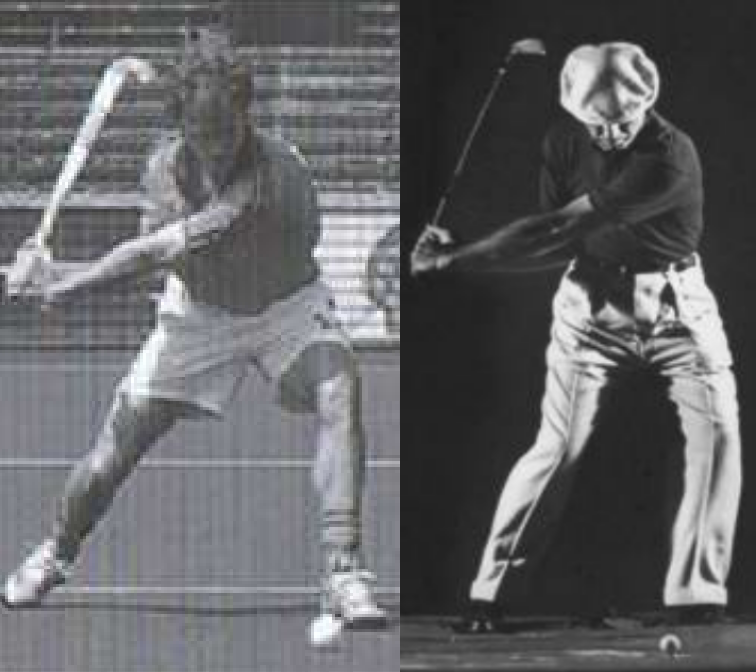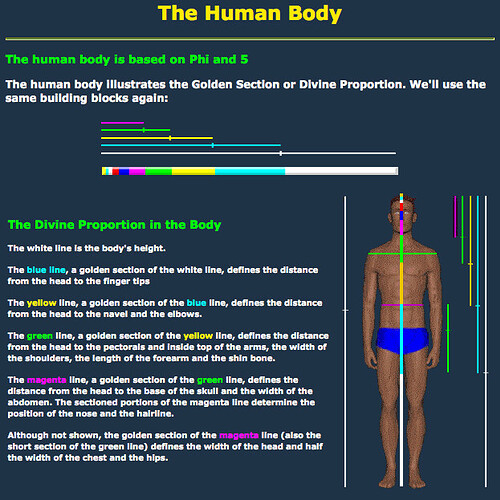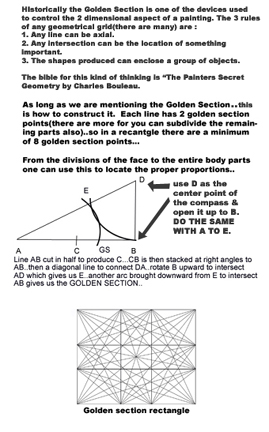We often hear observers say the swing of a good golfer is rhythmic, flowing, and beautiful.
What is it exactly in the good golf swing that stimulates that reaction?
There may be a clue about this in a valuable engineering research report, published September, 2008 online by the American Society of Mechanical Engineers, and authored by Ryan McGinnis called “Engineering a Better Golf Swing.” Ryan’s report resulted from his work with Dr. Stephen Nesbit. Ryan’s report is available at:
http://www.asme.org/NewsPublicPolicy/Newsletters/METoday/Articles/Better_Golf_Swing.cfm .
The computer generated image below was created by Ryan from his research findings.
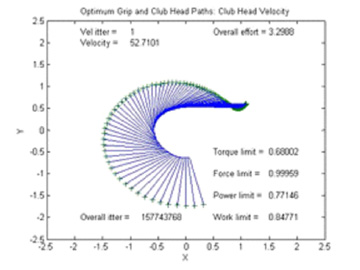
The elegance of the flowing path of this swing image vaguely reminded me of the flowing internal structure of the nautilus shell as seen below and in Wikipedia at
http://en.wikipedia.org/wiki/File:NautilusCutawayLogarithmicSpiral.jpg.

Some observers debate whether the flowing spiral in the nautilus shell reflects the Golden Spiral, Golden Rectangle, Golden Ratio, Phi, and the Fibonacci sequence that often exist in other natural as well as manmade designs. Examples and discussion may be seen at many sites including these:
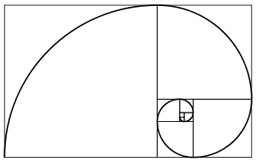
http://en.wikipedia.org/wiki/Golden_spiral
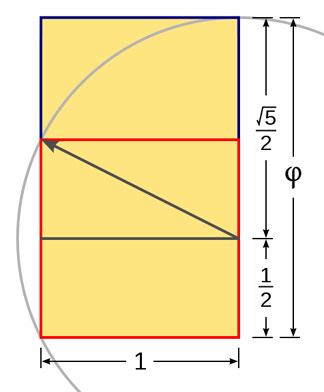
http://en.wikipedia.org/wiki/Golden_Rectangle
Some examples showing use of the Golden Rectangle in art are exhibited at:
http://www.world-mysteries.com/sci_17.htm
http://en.wikipedia.org/wiki/List_of_works_designed_with_golden_ratio
http://photoinf.com/General/Robert_Berdan/Composition_and_the_Elements_of_Visual_Design.htm
Studying Ryan’s graph and the similarity to the Golden Spiral led me to wonder if the Golden Rectangle might appear there and in real golf swings. I have not looked into this yet with real swings, but an approximation of the Golden Rectangle appears to me in Ryan’s graph. I demonstrate this with markings I imposed on his graph as seen and described below.
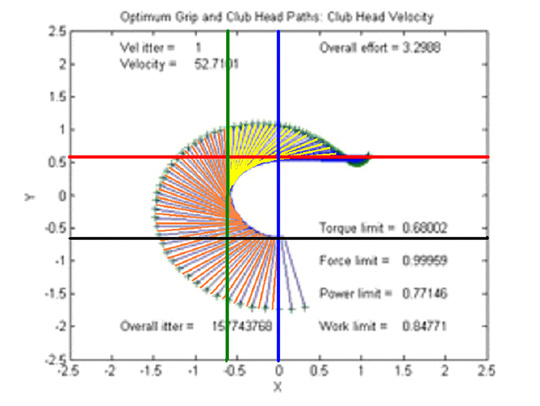
The four sides of the rectangle are enclosed by the intersecting pairs of blue, red, green, and black parallel lines. Three of the lines, the blue, red, and green, are formed by projecting them along the golf shaft where the golf shaft is at the top parallel, downswing vertical, and impact vertical. Observers may note the bottom horizontal (black) line of the rectangle may appear arbitrary but it is tangent to the path of the hands as are the red and green sides.
It seems worthwhile to observe that during the first interval (yellow area) from the top of the swing to the tangent of the green line, the shaft position changes 90 degrees, but in the second interval (orange area)from the green line tangent to impact, the shaft position changes 180 degrees, or twice as much. The ratio of 90 degrees to 180 degrees, or 1 to 2, is also a portion of the Fibonacci sequence as seen here in gray: 0, 1, 1, 2, 3, 5, 8… .
[i]Does the word “harmonious” apply to the coincidence of (a) both the path of the hands fitting the Golden Rectangle and (b) the shaft movement ratio of 1:2 fitting inside the Fibonacci sequence?
Does the approximation of the Golden Rectangle appear in other vantage points in the three dimensions of the swing or is this occurrence unique?
Even if this is the only place, why is it here at all?
How can we visualize this spiral path of the hands and club shaft existing in three dimensions that appears here in one plane?
Can someone create a three dimensional physical model or a computer simulation allowing us to change our point of view of the model infinitely?
Would the differences in the hitting and swinging protocols impact the generation of this model?
Are the Golden Spiral, Golden Rectangle, Golden Ratio, Phi, and the Fibonacci sequence, any of these, possibly useful in helping us conceive and develop our hitting or swinging technique?
What do you think?[/i]
…………………………………………………………………………………………………………………………………………………………………
Golfers can find additional valuable golf swing research in another inspired report, published online in 2009 by the Journal of Sports Science and Medicine, “Kinematic analyses of the golf swing hub path and its role in golfer/club kinetic Transfers”, by Ryan McGinnis and Steven M. Nesbit available at:
http://jssm.org/vol8/n2/11/v8n2-11pdf.pdf
…………………………………………………………………………………………………………………………………………………………………
Additional related information and discussion was found at various internet locations such as these:
http://en.wikipedia.org/wiki/File:Golden_ratio_line.svg
http://en.wikipedia.org/wiki/Phi
http://www.sound-physics.com/Music-Physics/Fibonacci-Sequence
http://www.maths.surrey.ac.uk/hosted-sites/R.Knott/Fibonacci/fibnat.html#spiral
http://www.vashti.net/mceinc/rgphigra.htm
http://www.vashti.net/mceinc/unfold7.htm
http://education.uncc.edu/cmste/summer%20ventures/2010%20History%20of%20Math/Fibonaccifinal.pdf
…………………………………………………………………………………………………………………………………………………………………
1teebox, August 21, 2010
